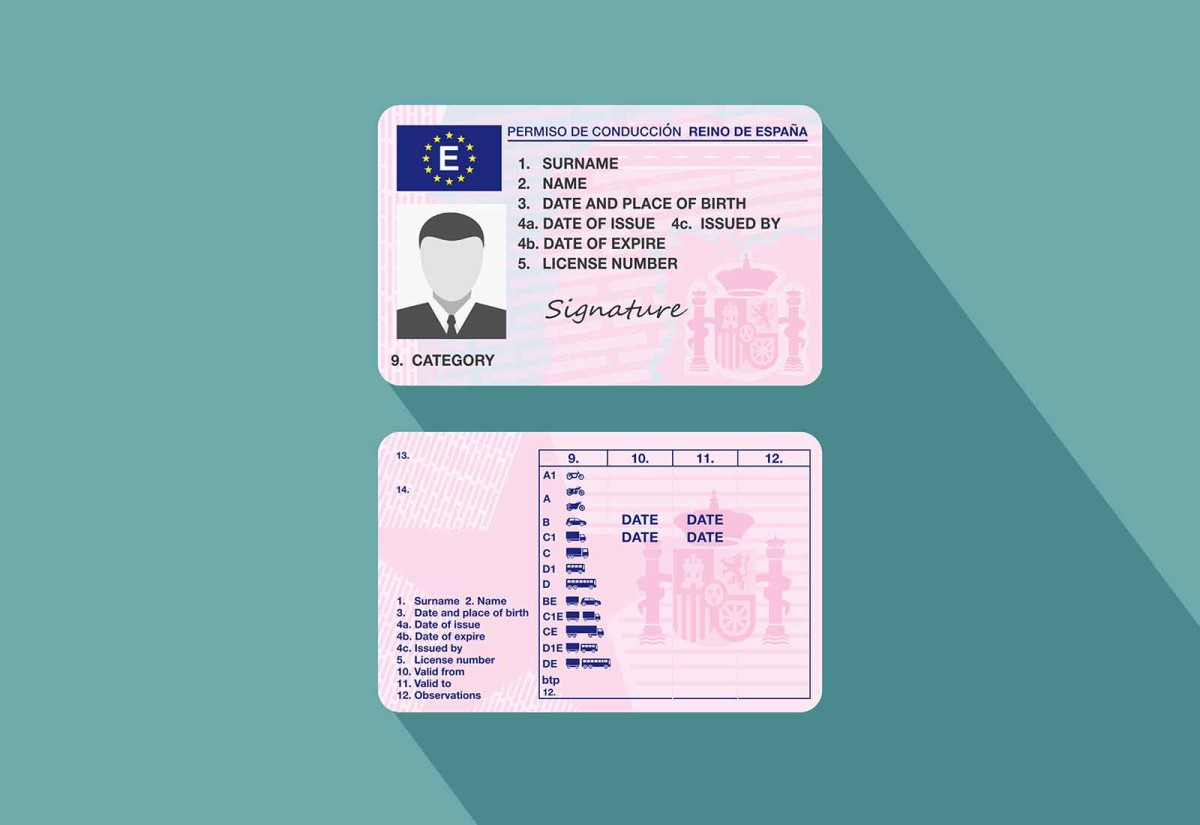
A driving licence not only certifies that we are qualified to drive but also contains a series of codes that, at first glance, may seem puzzling. These numbers and letters are not random; they serve to provide vital information regarding specific restrictions, adaptations or limitations related to the driver or the vehicle.
Understanding their meaning helps prevent confusion and ensures compliance with traffic regulations. In this article, we explain what driving licence codes are, what information they provide and how they are used.
What are driving licence codes?
Driving licence codes, generally identical throughout the European Union, are awarded during the licence-issuing process or later, during inspections, depending on the results of medical assessments or the driver's particular circumstances.
What do the codes on the driver's licence mean?
Driving licence codes, generally consistent across the European Union, are assigned either during the licence issuance process or later, following inspections, depending on the results of medical assessments or the driver's specific circumstances.
Here are all the driving licence codes and what they mean:
Codes | Administrative purpose and meaning |
70 | Permit exchange no. … issued by … (EU/UN symbol, if it is a third country); for example 70.0123456789.NL) |
71 | Permit duplicate no. ... (EU/UN symbol if it is a third country); for example 71.987654321.HR) |
72 | Limited to category A vehicles with a maximum cylinder capacity of 125 cm³ and a maximum power of 11 kW (A1) |
73 | Limited to category B vehicles, tricycle or motor quadricycle type (B1) |
74 | Limited to category C vehicles whose maximum authorised mass does not exceed 7500 kg (C1) |
75 | Limited to category D vehicles with a maximum of 16 seats, not including the driver's seat (D1) |
76 | Limited to category C vehicles with a maximum authorised mass not exceeding 7,500 kg (C1), towing a trailer with a maximum authorised mass exceeding 750 kg, provided that the maximum authorised mass of the combined vehicle and trailer does not exceed 12,000 kg and that the maximum authorised mass of the trailer does not exceed the unladen mass of the towing vehicle (C1+E) |
77 | Limited to category D vehicles with a maximum of 16 seats, excluding the driver's seat (D1), towing a trailer with a maximum authorised mass exceeding 750 kg, provided that: a) the maximum authorised mass of the combined vehicle and trailer does not exceed 12,000 kg, the maximum authorised mass of the trailer does not exceed the unladen mass of the towing vehicle, and b) the trailer is not used for the transport of passengers (D1+E) (Article 3.2 of Directive 91/439/EEC) |
78 | Limited to vehicles without a clutch pedal (or a manually operated lever for motorcycles) (Directive 91/439/EEC, Annex II, IB.5.1 and Annex VII, A), 4 of the General Regulations for Drivers) |
79 | Limited to vehicles that meet the requirements specified in parentheses under the application of paragraph 1 of Article 10 of Directive 91/439/EEC 90.01: to the left 90.02: to the right 90.03: left 90.04: right 90.05: hand 90.06: foot 90.07: usable |
95 | A driver holding an aptitude test who meets the professional competence requirements set out in Article 3 of Directive 2003/59/EC, valid until (1.1.2012) (for example 95.01.01.2012) |
96 | The driver has completed full training or passed an aptitude and behaviour test in accordance with the provisions of Annex V of Directive 2006/126/EC and the General Regulations for Drivers |
For their part, these would be the national codes:
Codes | Subcodes | Meaning |
101 | Applicable to class D and D + E licences. Limited to driving buses on routes with a radius of no more than 50 km from the point where the vehicle is normally based (Articles 5.2.c) and 6.2.d) of Royal Decree 1032/2007). | |
105 | Maximum speed limited, for administrative reasons, of: | |
1 | 70 km/h | |
2 | 80 km/h | |
3 | 90 km/h | |
4 | 100 km/h | |
106 | Date of first issue of the licence. For example, 106.2.(16.7.72): | |
2 | Military or police licence exchange | |
3 | Foreign licence exchange | |
4 | The holder of another foreign licence that cannot be exchanged in Spain | |
5 | New licence obtained after the expiration of the old licence due to the use of the total number of points assigned to it | |
107 | Category AM - limited to three-wheeled vehicles and lightweight quadricycles | |
200 | Appendix to the driving permit or licence. The holder must carry a document issued by the Provincial Traffic Department outlining the conditions for using the vehicle | |
201 | Appendix to the driving permit or licence. The permit or licence will not be valid without a document containing the text of the resolution specifying the time periods during which the suspension of the authorisation must be served | |
202 | Limited to driving police vehicles and buses referred to in Article 74.1, valid until (1.1.2012) (for example: 202.01.01.2012) (Article 74.2 of the General Regulations for Drivers) |
What happens if I do not comply with the driving licence codes?
Failure to comply with the instructions is a serious offence, punishable by a fine of €200. As Article 3 of the General Regulations for Drivers states, “the holder of a driving permit or licence, as well as any other authorisation or document that enables driving, must do so subject to the mentions, adaptations, restrictions and other limitations regarding persons, vehicles or traffic that, where applicable, appear on the driving permit or licence [...]”.